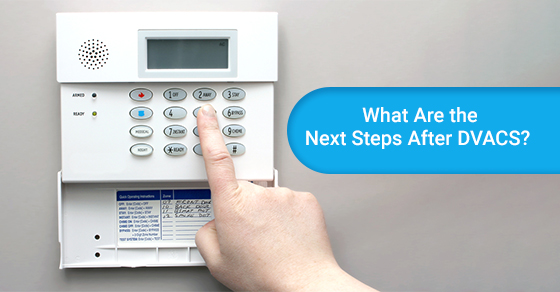What Are the Next Steps After DVACS?

When it comes to security, Digital Voice Access Control Systems (DVACS) offered the most robust option back in the 1990s. For many homeowners with a DVACS, there is uncertainty as to how best to update or improve their systems to meet the changing demands of a digital world. There are some steps you can take if you currently have a DVACS in your building.

What are DVACS?
The most effective security and fire monitoring systems depend on a mode of communication that keeps you in contact with either a security company, the police or an emergency service. In the case of DVACS, they are used in fire alarm monitoring as well as security and intrusion alarm monitoring through a dedicated line provided by Bell Canada. Because it is a dedicated line, it is referred to as an active form of communication by the Underwriters Laboratories of Canada (ULC). This was believed to be the safest and most dependable mode of communication as it provided an “open pipe” between your system and the center which receives your signal should your alarm be activated.
It has always been regarded as a stable and secure product however, they are no longer being installed and maintained by Bell Canada. Additionally, because there has been a decline in the use of DVACS, there might be difficulty in finding a service to assist with your system as well as new updated systems and parts for repairs.
Manufacturing is Discontinued
With changing demands in the security industry, mostly circling around advances in cellular technology and smart homes, manufacturers discontinued the manufacturing of transmitters and DVACS modules in order to meet the changing demands of the market. By discontinuing DVACS, manufacturers were able to focus their efforts on producing the type of monitoring panels the industry demands, certified to meet the changing standards required.
Today, commercial intrusion systems have become the industry standard. DVACS Circuits are not used in this latest technology which is suited to the digital dialers (phone lines), cellular or IP for communications. With this in mind, it is difficult to install new equipment for DVACS installations. Instead, companies that support DVACS use DVACS supportable equipment to provide service and repairs to existing systems.
The Expense of DVACS Monitoring
Another challenge of DVACS is that they are more expensive to maintain. Due to their dedicated lines, if you look at the cost for other alarm transmissions such as cellular and IP, you will find the rates for the dedicated line for the DVACS is comparable to a commercial phone line. This is far costlier, as these rates are controlled by the CRTC, and tend to continually rise.
Certifications for DVACS
Adding to the issues DVACS owners face, the ULC has limited new certifications for these systems. You can only get new ULC certificates issued for systems that have been in continuous service since December 31, 2009. These systems can maintain their certificates if the DVACS circuit remains and the facility has not changed monitoring providers. Should you have existing DVACS equipment it can only be upgraded to a newer type of communication if you switch service providers and it is determined a ULC certificate is required. However, should you have an existing DVACS system without a certificate issued and you require a ULC Certificate, there is a good chance we can provide it.
Upgrades to Active Cellular Systems
If you are interested in upgrading your security system and wish to maintain active fire alarm monitoring this is now more commonly done through cellular communications. The cellular connection only requires one path and is also supervised much like a DVACS system. Upgrading to a supervised cellular system is relatively easy requiring a simple one-for-one panel upgrade. Your ULC fire monitoring company will take care of any infrastructure upgrades required which means an active cellular system is best if you do not currently have a communication infrastructure already installed.
If you are considering a cellular system you do require a strong cellular signal to ensure everything operates smoothly in the event that an alarm is triggered. In some cases, this could require using an antenna for example. With a dependable signal, this is an excellent option for upgrades or replacement of a DVACS. As mentioned, you will also find the monitoring service to be more cost-effective than your DVACS.
Upgrades to a Passive Fire Monitoring System
The main difference between active and passive systems is that passive systems are not supervised 24/7 and use two communications paths which typically include a combination of an analog phone or fax line, a cellular or an IP/Internet Connection. The two paths monitor each other at a regularly scheduled time and report issues, however, this poses an issue should there be an interruption before or after the scheduled check. This is why passive systems are considered less safe and dependable.
The best situation for passive systems is when there is already a communications infrastructure in place that is controlled by the user. As the system already exists you will find this to be the most affordable option. Although the monitoring is not as frequent as a DVACS, the upside is that there are two paths. So, should an issue occur with one path, the other continues to provide monitoring. In the case of the DVACS, if your line is down due to a service outage your alarm system is also down.
For a passive monitoring system, there is more work involved during installation because you are dealing with different providers for the paths – such as a phone company – to add a phone or fax line in hand with an IT provider to install your IP. However, in some cases, you can work with a single provider who might offer both phone and internet.
If you are looking for ways to upgrade or replace your current DVACS speak to our knowledgeable team to discuss your options by calling 888-78-3473 or contact us here.